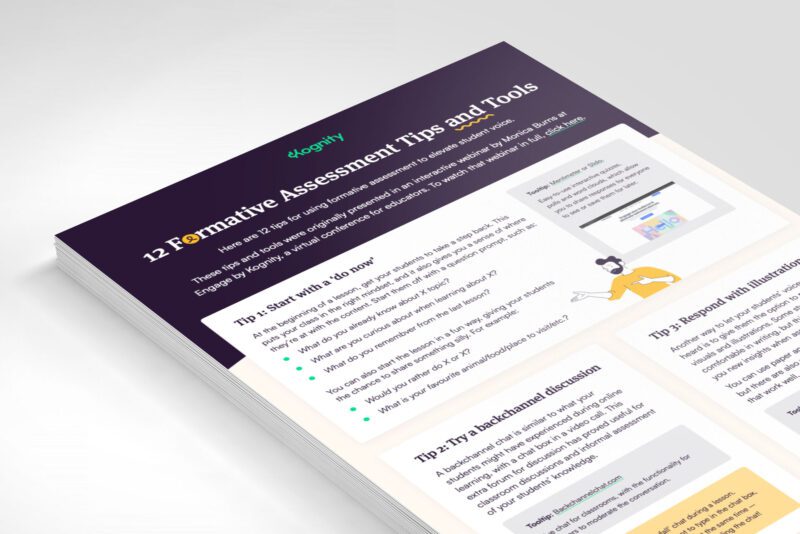New Teacher Guide: Differentiating Your Teaching – The Basics
As you are now a few months into your first year in teaching, you will no doubt have heard a lot about differentiation, or maybe even learnt about it during your studies. But how does it work in practice? What does it mean exactly? How do you balance differentiation with standards? Here we break down the basics to make sure you’re equipped with the confidence to be able to implement it going forward in your new role.
If you enjoy this article and want to read more, sign up for our new 54-page guide ‘First Year Teacher Survival Guide’, at the bottom of the page.
What does ‘differentiation’ mean exactly, and why is it important?
There could be two answers here: a) it is good for your students, and b) many accrediting bodies have it as a requirement for your school’s continuing acceptance in their recognition.
The term “equitable” can be useful when it comes to explaining differentiation. Doing something equitably means that your students get what they need, and when they need it in terms of instruction. This is where differentiation comes in. You can think of differentiation as being similar to you and four others looking at a road map for a large city. You can all find where you are, you can choose five different routes to get to where you want to go, and all five of you get there even though you all chose different routes.
“Equitable” doesn’t mean “equal,” but
is more important for your students.
Differentiation doesn’t mean 25
lesson plans for 25 students.
Differentiation means that you plan your lessons to meet the varying learning needs and styles of your students. You can differentiate the content of your lesson, the process through which you deliver your lesson, and the product the students use to demonstrate their learning. It does not mean that you must have 25 lesson plans if you have 25 students. You can do these separately, or cohesively.

- Differentiating Content – while each curriculum has a set amount of the “what,” think of it as a “funnel”; some students may access the content toward the narrower end of the funnel (analogous to key “must have” concepts), while other students may access the same content at the wider end of the funnel (analogous to the widening, deepening, and extending of the key concepts). Differentiation allows all students to be active members in the class. Therefore, students will not feel excluded. Rather, they will be receiving what they need in order to be successful learners.
- Differentiating Process – there are so many ways to have students access the “what” and the “so what.” Some students want to read about it all, while others want to sit and listen. Others like to do hands-on work and learn through experiencing the “what,” while another set gets it best when they see a three-minute video of how “it” works. This does not mean that the different styles are mutually exclusive. It is just that we all have our natural preferences; you don’t have to do all types, all the time, every day, but you will be amazed at how your students thrive in different ways when you use multiple modes of classroom lesson delivery.
- Differentiating Product – Posters, website design, and demonstrations, are all valuable, authentic means to demonstrate learning. That is not to say that more traditional forms of product, such as writing a formal essay, are not valuable. Indeed, most curricula have these more traditional forms as mandatory components. What it does mean is that just like students access knowledge and skills according to their natural preferences, so too they have natural preferences to show their learning. One student may be frightened to speak in front of a class, but will have no problem creating a short video of his or her presentation. Another may be able to write a song or poem; the list can go on. It is okay to use the same rubric, yet have different products produced by the students.
How Do I Balance Differentiation with Standards?
Depending on your school’s choice of curriculum, differentiation of product may feel like a challenge to you. Specifically, certain curriculum sets have strict standards for what students produce, especially pertaining to final exams, writing essays, and such. How do you balance this critical element for your students – prepare them for these events – while maintaining the philosophy of differentiation?
In your interactions with colleagues, both at your school or in your teacher training, you may have heard the phrase “teaching to the test” used in a negative light. Of course, that philosophy certainly can be negative.
However, if you consider the phrase in a different light, “teaching to the test” actually is an appropriate term for the “start with the end in mind” style of lesson planning discussed earlier (i.e. start with how the students need to be able to demonstrate the learning, then design the teaching and learning strategies backward from there).
There is no doubt that at your school, you will have students with special educational needs in your classes. Each school (and even school systems) has its own guidelines, and capacities, to assist students in this manner.
What will it look like for you as a teacher?
No matter what the school or curriculum, you will see common aspects (even though these aspects may have different names). You will see situations concerning accommodations, modifications, and Individual Education Plans (IEPs).
With that in mind, your key point is to know what the curriculum set expects students to be able to produce – for instance, a large essay to be evaluated externally. As the teacher, you must know how to connect (and more importantly, have the STUDENTS be able to connect) the differentiation to the eventual standardized product your students will have to produce. To further the large essay analogy, students may organize their rough drafts in different ways based on their preferred style – written, story-board, mind- mapping with numbered progressions, note cards, and so on – but all will have to coalesce around the formal written essay.
There are many ways to work with differentiation. Your capacity to do so will grow over time. Don’t be afraid to give some choice to the students, appropriate to age and grade – it doesn’t mean that you are giving up your responsibilities. When students feel like they have some ownership over their learning, you are more likely to gain favorable results.

Do you want to download the entire new teacher guide e-book?
Click here
Blog articles




